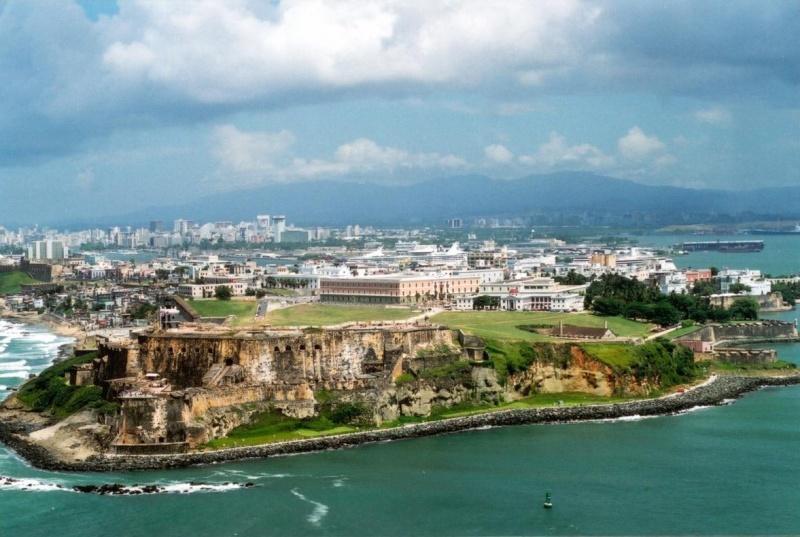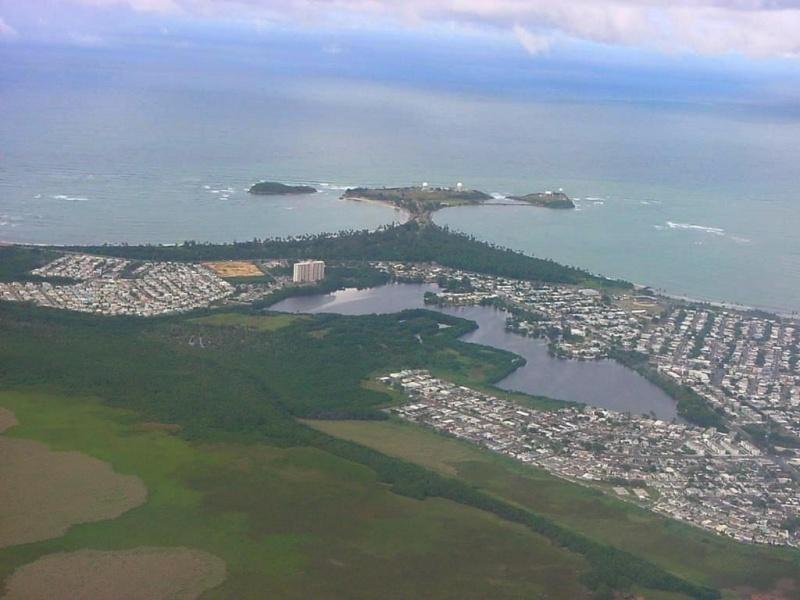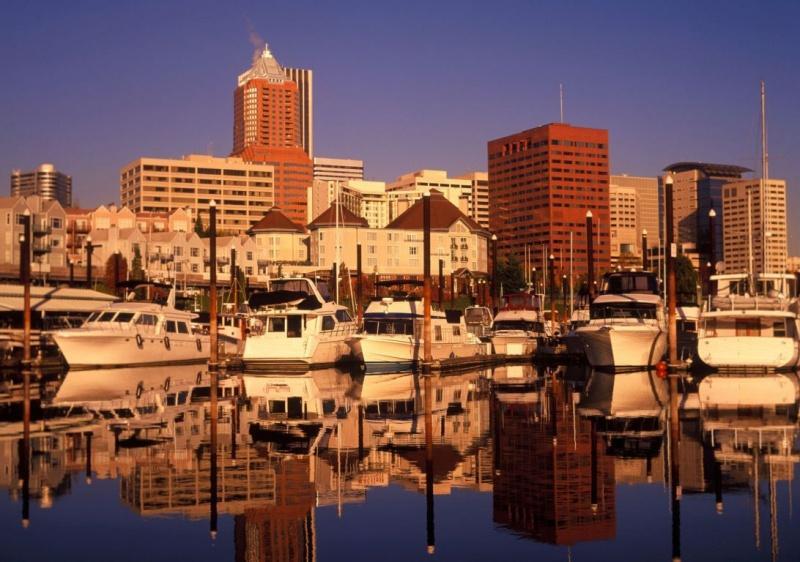, , Puerto Rico
Suggest Place to Visit
4878
Track to location with GPS |
 |
Puerto Rico is known as ´´Isla del Encanto´´. It is one of the Caribbean islands with the greatest development of urban culture. Sports, shopping, colonial and ecological tourism, in Puerto Rico anything is possible. Even colorful and breathtaking sunrises and sunsets. It is the easternmost and smallest island of the Greater Antilles. From a privileged geographical position, it offers its visitors hundreds of beaches along 414 kilometers of coastline; but, in addition, a natural environment that is not short if it is defined as "a true paradise".
The history of Puerto Rico began with the settlement of the Ortoiroide people in the archipelago of Puerto Rico between 3000 and 2000 BC. Other tribes, such as the Arawak and Saladoid Indians, populated the island between 430 BC. and 1000 AD
At the time of Christopher Columbus's arrival in the New World in 1492, the dominant indigenous culture was that of the Tainos.
Located in the northeast of the Caribbean Sea, Puerto Rico formed a key part of the Spanish Empire from the first years of the exploration, conquest and colonization of the New World.
In 1898, during the Spanish-American War, Puerto Rico was invaded and later became a possession of the United States.
Precolonial Puerto Rico.
Its culture, however, would remain strongly engraved on that of contemporary Puerto Rico. On November 19, 1493, Columbus made land on the island, calling it San Juan Bautista in honor of San Juan Bautista. So, upon the arrival of the Spanish, the island was inhabited by the Taino Indians.
The Tainos gave him gifts of gold and Columbus coined the name Puerto Rico. The Spanish changed the name of the island to San Juan Bautista and the capital was called Puerto Rico City. Over the years, Ciudad Puerto Rico became San Juan, and San Juan Bautista became Puerto Rico.
However, this name was changed after the US occupation for several years to Porto Rico, to later be made official as Puerto Rico. "
During the 1520s, the island took the name of Puerto Rico, while the port became San Juan.
Canon Alonso de Manso was appointed bishop of the diocese of Puerto Rico.
At the beginning of the colonization of Puerto Rico, attempts were also made to remove Spain from control of Puerto Rico.
The current name of "Puerto Rico" refers to the wealth that left the port of San Juan Bautista. Christopher Columbus baptized him with the name of San Juan Bautista. The natives of the Taino tribe called the island Borikén, which means ´´Our Noble Lord´´ which evolved into the name of Borinquen, a name that is still used in reference to Puerto Rico. From there comes the name ´´boricua´´, synonymous with ´´ Puerto Rican´´. The Spanish named the capital Puerto Rico. As the years passed, the names were exchanged, so that "Puerto Rico" became San Juan, and San Juan Bautista became Puerto Rico. Currently, the capital is San Juan.
PUERTO RICO GEOGRAPHY
Puerto Rico is an archipelago formed by the island of Puerto Rico (the smallest of the Greater Antilles) and several islands, islets and keys, among which are the islands of Mona, Monito, Vieques, Culebra, Desecheo, Caja de Muertos and numerous keys and islets mainly to the east and south of the island.
Location: Between the Caribbean Sea and the Atlantic Ocean. East of the Dominican Republic, west of the British Virgin Islands, and northwest of the United States Virgin Islands.
40% of the island is covered with mountains, the main ones being the Central Mountain Range (it divides the island into two parts), the Sierra de Luquillo and the Sierra de Cayey. Another 35% is covered by hills and the remaining 25% is occupied by plains, mainly in the northern coastal region. The highest part of the island is found on La Punta hill, in the Central Mountain Range, with a height of 1,339 meters. A short distance from the north coast, the Puerto Rico Trench is the deepest in the Atlantic Ocean at -9,129 meters.
The north coast (Atlantic) is wet and green. The southern coast (Caribbean) is conducive to cacti, yuccas and maguey, which grow in a semi-desert landscape. Towards the northwest the terrain is characterized by its green hills, caves and ravines. The karst system of the Camuy River is one of the most extensive in the hemisphere. In the southwest, the mangroves have created a unique canal system.
Puerto Rico has national parks, many of which are forested and another six about to be declared. The most important is the Caribbean National Forest (known as El Yunque). Formerly it covered a larger area than today, 113 km2. Just over 370,000 million liters of rainwater are recorded in El Yunque each year, creating a lush jungle, habitat for numerous species of plants and trees. Although this amount may seem excessive, at some points it reaches one billion liters per year. The Guajataca Forest, with dozens of trails, and the Guánica National Forest, a dry forest with a large number of bird species, are other important reserves. The biggest attractions used to be offered by the two bioluminescent bays: in La Parguera and on the island of Vieques. Today, the bioluminescent bay of La Parguera has been losing its luminosity due to the pollution produced by the large number of boats sailing in the area. Another luminescent bay that is becoming popular is that of the municipality of Fajardo, which, when kayaking at night, offers one of the best luminescent experiences on the island. Also to the northeast of the island is part of the so-called Bermuda Triangle.
Puerto Rico offers a more pleasant tropical climate than other tropical countries due to the influence of the trade winds that push the clouds and cool the air. The temperature, without great annual variations, registers a diurnal average of 24 to 27 ° C (75.20 to 80.60 ° F), descending at night in the mountain areas. In places higher than 2,000 feet, the climate can change to temperate, as it happens in places like Jayuya, Adjuntas and Maricao where there are pine forests and temperatures up to 20 ° F lower than in the city of San Juan. However, in the summer the temperature can feel close to 38.5 ° C (100 ° F). In the summer of 2009, heats as high as 105 ° F have been felt. The lowest temperatures are recorded at the El Guineo Dam. The average in this region is 19.45 ° C (67 ° F). In Adjuntas low temperatures between 40 ° F and 50 ° F are registered in the winter. The lowest temperature on record is 40 ° F at Aibonito. Many Americans visit the island in the winter to escape the cold but not all winter days on the island are warm, the temperature in San Juan dropping 60 degrees at night and no higher than 79 degrees during the day, this in December , January and February. March is the best month to enjoy the island of enchantment, it is neither cold nor too hot and this is the driest month in Puerto Rico, in San Juan there have been March where only traces of rain have fallen. The cold lasts 3 months and the heat 9 months. The seasons of the year are not marked much but a little: summer is humid and hot; autumn is very rainy, the leaves turn a little yellowish, some trees like oaks and almond trees vote for them all; winter is cool and dry and in spring all the trees bloom and countless flowers appear in the forests and the city.
Puerto Rico has one of the most dynamic and diverse economies in Latin America. In the mid-20th century, the Puerto Rican economy was dominated by agriculture, especially the cultivation of sugar cane. However, a large investment in infrastructure and extensive incentive programs have significantly transformed the economy. Since the 1960s, numerous multinational companies from the pharmaceutical, electronics, textile, petrochemical, and more recently biotechnology industries have been established on the island. Today, manufacturing and the service industry (including tourism) have replaced agriculture as the main producer of income. Similarly, livestock and dairy production replaced the sugar industry as the main sector of agriculture. The economy decelerated between 2001 and 2003 due to the slowdown in the US economy. In 2004 he began to recover. Puerto Rico entered a recession period in fiscal year 2006, this period has continued uninterrupted until fiscal year 2009. The economic outlook points to a slight improvement in the behavior of the Puerto Rican economy in fiscal year 2010, mainly due to a better performance of the global economy and the rescue plan approved by President Obama. Said plan includes an economic injection of more than five billion dollars for Puerto Rico.
The Island has different folk rhythms such as Bomba and Plena, in jíbara (peasant) music, Six with a tenth and Aguinaldo Jíbaro, in classical music, Puerto Rican Dance and Puerto Rican Mazurca. Currently his rhythms with an international boom are undoubtedly Salsa and Reggaeton. The latter, rhythms with foreign roots, Salsa evolved from Cuban rhythms and Reggaeton, which is a fusion with Rap and Reggae in Spanish and currently it has been fused with all kinds of rhythm, the fusion with Dominican Bachata being successful. . On the other hand, Flow, a ballad-type variation of Reggaeton, has great popularity as well.
National holidays
In Puerto Rico, all national holidays of the United States are observed, with the exception of the Day of the Discovery of America (Columbus Day). While the Federal Government of the United States celebrates that date on the second Monday in October, Puerto Ricans officially commemorate it on October 12 of each year.
In Puerto Rico, Boricua Christmas begins in November the day after Thanksgiving in the US; at Christmas, on December 25, and on Three Kings Day, on January 6, gifts are given to children (and adults); and the Christmas season ends 16 days after Three Kings Day with the octavitas.
There are ten solemn Christmas parties in Puerto Rico: the Aguinaldos Masses, Christmas Eve, the Misa de Gallo, the Easter Day (Christmas Day), New Year's Eve, New Year's Eve, Three Kings Day, the octaves and octavitas, and the Christmas gifts. (parties, trullas or assaults).
Comments
We don´t have yet any comments about:
Puerto Rico
Puerto Rico
Be the first to leave a comment as it is very important to inform other people
Outros locais a visitar
Within a radius of 20 km from:Puerto Rico
San Juan |
| 1,6 Km |
 |
Punta Salinas |
| 7,0 Km |
 |
Hotel reservation near Puerto Rico within a radius of 20 km
Why to book with Clube Net
The best prices
Our partnerships with the world´s largest operators offer research on the best market prices.
More options
At Rotas Turisticos you can book the hotel, buy the air ticket, book the transfer from the airport to the hotel and vice versa, book the local excursions, rent the car, take travel insurance and consult the places to visit and where to go.
Holiday Tips & Destinations
Hundreds of holiday destinations with all the options that allow you to easily choose the destination that best suits your dream vacation.
Clube Net
Links






